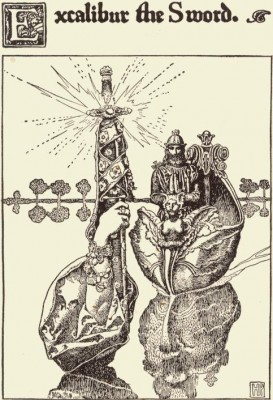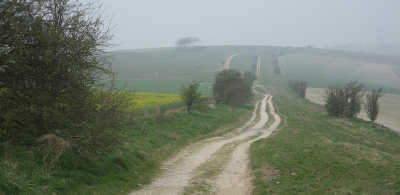 Oral and written tradition has preserved something of Ambrosius. His name passed into Welsh legend as Emrys, and spread thence into modern usage. One or two sites in Wales, and perhaps in Cornwall, bear his name. Features of the landscape named after heroes, like Dinas Emrys or “Arthur’s seat,” are never by themselves evidence that the hero had anything to do with the place. What they show is that when they were so named the local population knew and loved stories told about those heroes, and liked to imagine that their exploits were performed in their own familiar countryside….
Oral and written tradition has preserved something of Ambrosius. His name passed into Welsh legend as Emrys, and spread thence into modern usage. One or two sites in Wales, and perhaps in Cornwall, bear his name. Features of the landscape named after heroes, like Dinas Emrys or “Arthur’s seat,” are never by themselves evidence that the hero had anything to do with the place. What they show is that when they were so named the local population knew and loved stories told about those heroes, and liked to imagine that their exploits were performed in their own familiar countryside….
Places named after stories of Ambrosius are fewer than those inspired by the Arthur legend, and are evidence of when and where the stories were told. The Arthur names derive almost entirely from the Norman romances of the 12th and later centuries; but they are fewer in Wales than in England, and in Wales the legend of Ambrosius was well established by the eighth century, though it was not long-lived. It may be that during the sixth and seventh centuries the name of Ambrosius was as well loved as that of Arthur.
It is also possible that Ambrosius’ name survives in England for reasons that owe nothing to legend. “Ambros” or “Ambres” is considerably commoner in English place names than is Emrys in Welsh. Strenuous efforts to find an English origin for these names have failed; since they are not English, they are names that were used before the English came. The syllables have no meaning in any relevant language; the early spellings suggest that they usually represent the name of a person, and probably always do so.

In late Roman usage, cities often bore the names of emperors, but lesser places were rarely so distinguished, save in one particular context. Army units often named the places that they garrisoned, and in the late empire army units commonly bore the names of the emperors who raised them; the “Theodosiani” and the “Honoriaci” were regiments raised by the emperors Theodosius and Honorius. It is likely that any units raised by Ambrosius were known as “Ambrosiaci,” and possible that they named the places where they were garrisoned, in lands they had recovered and pacified. The English towns and villages called Ambrosden, Amberley, Amesbury and the like are found only in one part of the country, in the south and south midlands, between the Severn and East Anglia, on the edges of the war zone between the Cotswold heartlands of the Combrogi and the powerful English kingdoms of the east. Half of these places are suitably sited to defend Colchester and London against Kent and the East Angles, and three more border on South Saxon territory. Several of them are the names of earthworks. If garrisons were there stationed, they were established when the Thames basin was securely held, and they stayed long enough to leave their names behind, into and beyond the time of Arthur.
—John Morris (1913-1977) in The Age of Arthur: A History of the British Isles from 350 to 650 (1973), ch. 6
